The premise is simple: read one comic every day for the entire year. It seems like a simple task but there is no way that I read 365 comics last year, even if you count the individual issues in collections. So, this year, I am committing myself to this reading challenge, in the hope that I can broaden my reading habits and fully engage with my favorite hobby again.
I’ve seen a post doing the rounds of Twitter asking people to post the comic that got them into the medium. Not necessarily the first comic that people read, but the one that was their gateway into the world of sequential art. If you’ve been reading this column for a while, it’ll come as no surprise that The Transformers was instrumental in my early comic addiction. However, I have been reading comics for as long as I can remember, and there are a number of other comics from the same time that helped nurture my love of the medium.
I remember that I had a large collection of Beano comics dating from 1984 to the end of the 1980s. This collection included a long running mystery that involved the disappearance of Dennis the Menace’s pet dog Gnasher. Gnasher went missing for 7 whole weeks (a long time for a young reader). Reading about the growing distress of the central character as he searched for his best friend must have made an emotional impact, because I couldn’t tell you what happened in any of the other 200 issues that I kept until my late teens. However, I can still remember aspects of that particular story.
MFR ON YOUTUBE (latest video)
Help us reach 5K Subs!
I also remember reading Scouse Mouse Presents ACE, a comic featuring a Liverpudlian cartoon mouse and his friends. Again, I don’t remember much that happened in the actual stories but I do remember copying the characters onto my school books and even cutting out the artwork to stick on my wall and on folders. Luckily, I didn’t do that with any of the Amazing Spider-Man comics I had at the time (at least not that I will admit to).
The point is, I find it difficult to pinpoint one comic that started my obsession; it was a multitude of comics, bought and read over a period of years. Like a chain reaction, leading from one creative product to the next. One aspect of comic publishing (in the UK at least) that was instrumental to my early reading was the Annual. Long running, popular comics released a hardback book each year full of comic strips, text stories, and other paraphernalia. The most famous are probably Beano and Dandy, but there were so many others. And it is a tradition that is still going on today. There is a lot of excitement every year for the release of the Doctor Who and Beano Annuals, so hopefully these books are inspiring the comics fans of the future.
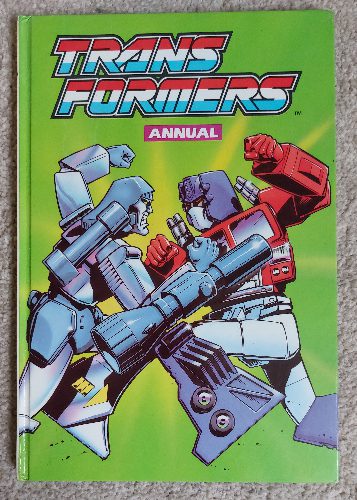
Comic Number 113: Transformers Annual 1990
Obviously, I have a number of Transformers Annuals, from the first one in 1985 through to this one from 1990. I only missed out on two that were published in 1991 and 1992. I picked the wrong one to read this week though, because this came out after the weeklies I’m currently reading. Luckily, nothing gets spoiled…
The book contains a mix of comic strips, text stories, a history so far (which I skipped), and a collection of quizzes and fact-files. It’s a treasure trove for young Transformers fans. The stories are entertaining and the comics are wonderfully drawn. The best part of this book is checking out the British talent involved in putting it together. Names like Dan Abnett, Dan Reed, Andy Wildman, and Ian Rimmer, are all creators recognizable from the weekly comics but also from a host of other comics published at the time and in the 30 years since this annual was released.
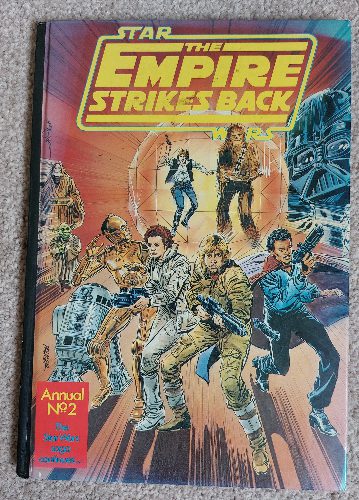
Comic Number 114: The Empire Strikes Backs Annual 2 1981
Another Marvel offering, this time reprinting issues #50 and #46 of the Star Wars comic (I’ve numbered them that way around because that’s the way they have been printed in the book).
Set after The Empire Strikes Back , these stories fill in some of the story between Empire and Return of the Jedi, but still manage to use all of the popular characters. The Crimson Forever employs the story within a story literary technique to include the popular, scruffy looking scoundrel Han Solo, and an expressive dream sequence allows Luke to interact with Darth Vader.
Archie Goodwin writes a compelling narrative that incorporates movie and comic continuity in a stand alone story. The artwork is intricate but it is the coloring by Don Warfield that makes the visuals stand out in this reprint.
There’s nothing else in this book beside the two comic stories. There isn’t even an introduction page, which, compared to the other annuals I used to read growing up, seems a bit content stingy. I nearly wrote that it might have something to do with the date of publication, as most of the annuals I read were from the later half of the 1980’s but then I remembered the next book I’ve got out to read…
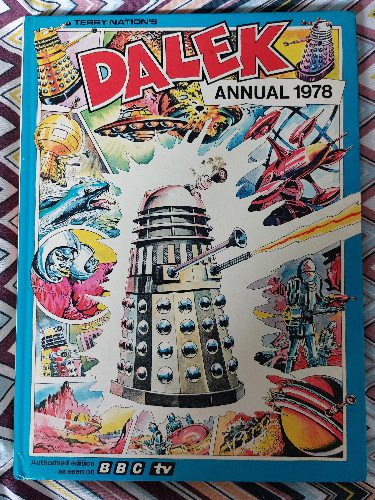
Comic Number 115: Dalek Annual 1978
What a wonderful piece of children’s entertainment this book is. Fact based trivia sits side-by-side with science-fiction fantasy. The life and times of Davros, creator of the Daleks, is presented as a historical examination of the fall of a genius and asks the question: was he a madman?
The text stories are accompanied with beautiful illustrations by… who knows? There are no credits in this book, aside from Terry Nation’s name as creator, which is a shame because there is some outstanding work in this book. The Dalek comic strips are sublime. The page layouts are truly adventurous with barely a stable grid pattern to be seen. The standard layout is obscured by odd shaped panels that lack uniformity, page after page. The opening and closing panels of each page are the only regularly shaped panels and hint at the fact they have been resourced from a weekly format. I love the expansive and elaborate Dalek comic strips and the range of design for the characters and creatures that inhabit the worlds.
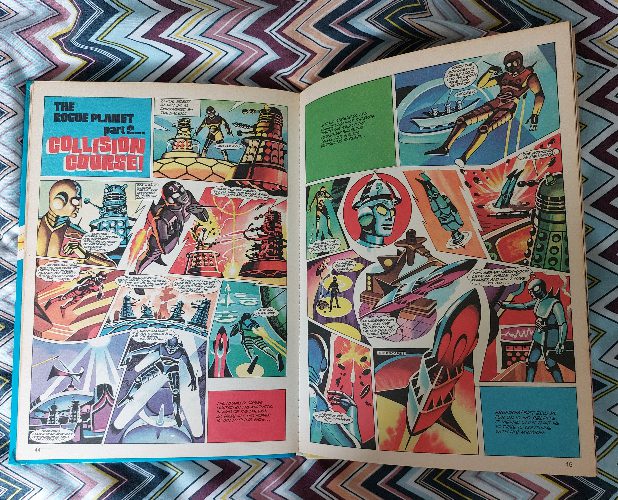
There is something joyful about the comic strips in this book and the fun factor spreads to the rest of the annual. Yes, this is for children, but it does not speak down to anyone and therefore becomes a pleasure to read, even as an adult.
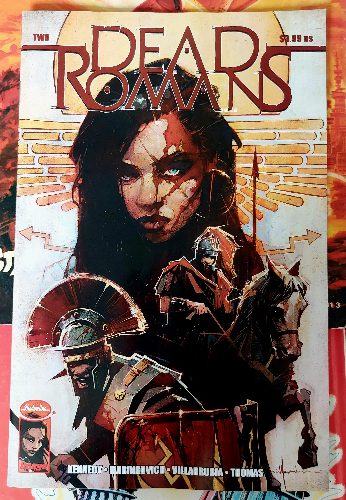
Comic Number 116: Dead Romans #2
All stop for the new issue of Dead Romans. I’m loving this comic and don’t have much more to say about it.
I mean, the artwork by Nick Marinkovich is outstanding. It captures the desperation of the Roman Legion lost in the Teutoburg swamp lands, hounded by the combined forces of local tribes. The violence of the narrative — written superbly by Fred Kennedy — is there in every panel, accentuated by Jose Villarrubia’s coloring. Even the word balloons by Andrew Thomas are smudged, illustrating the rain and mud that traps the soldiers in the forest.
It is an absolute visual treat and easily one of the best new comics I have read this year.
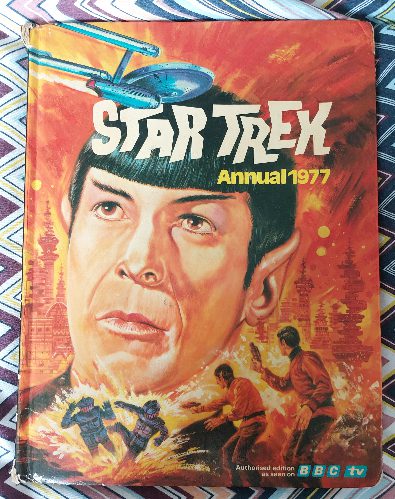
Comic Number 117: Star Trek Annual 1977
This is the oldest annual I am reading this week (but not the oldest I own, as I have some Doctor Who annuals from a few years earlier) but it isn’t much different from any of the others. The paratext has an educational leaning and the comic stories feel as though they could be set on the same back lots where the original series was filmed. The narratives are more elaborate but the design and setting is not too outlandish, almost a contrast to the Star Wars comics from the same period.
The most fascinating thing about this book is that, once again, there are no credits inside. Even the creators’ names have been removed from the re-printed comic strips. In today’s internet world, it is relatively easy to track down the original comics and the creators, but when this comic came out, especially in the UK, finding out who wrote or illustrated any of this book would have been extremely difficult. Even into the late 1980s, creator credit was not given to the people who worked on British comics. I remember meeting Dan Abnett and finding out that one of the text sections in the Real Ghostbusters comic was written by him. Each issue had a page of Egon Spengler’s Spirit Guide, so over the years, it amounted to a significant number of pages and not once was Abnett credited. A number of creators who I have spoken to who worked in British Comics publishing, especially Marvel UK, have indicated that a lot of the filler work in the comics were produced by whoever happened to be in the office at the time. It’s an interesting way of working and one that would not be tolerated today. Probably…
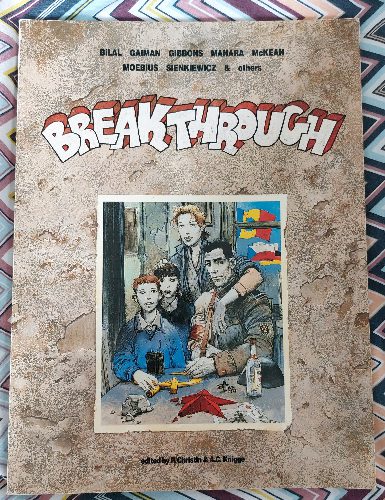
Comic Number 118: Breakthrough
Published by Titan Books in 1990, this book edited by P Christin and AC Knigge collects a selection of stories all written as a reaction to the fall of the Berlin Wall. It has work by some of the biggest comic book creators from the last 50 years and is a thought provoking, moving examination of an important historical event. Unfortunately, some of the stories are still relevant to today’s world and a cynic may say that we haven’t learned a thing.
Writers and artists such as Bill Sienkiewicz, Neil Gaiman, Milo Manara, Dave Gibbons, and the outstanding Moebius contributed to this book. There are science fiction stories, superhero tales, and moving life dramas, all that have a common theme derived from the fall of the Berlin Wall. Some of the work is cynical, some heartbreaking, but there is an overriding feeling of hope emanating from the collection. It is a stunning book and one that I would recommend to people. Stories such as Matthias Schultheiss’ Them are subtle social commentaries whereas Zeljko Pahek’s The Black Scar is a little more on the nose. But all are compelling reads.
As a way of commemorating an event, producing a book like Breakthrough is a wonderful idea. The fact that the editors used writers and artists from a range of countries and backgrounds also adds to the excitement of the book. Each comic has a different perspective of the same event and, as a reader, you can’t help but compare and contrast.
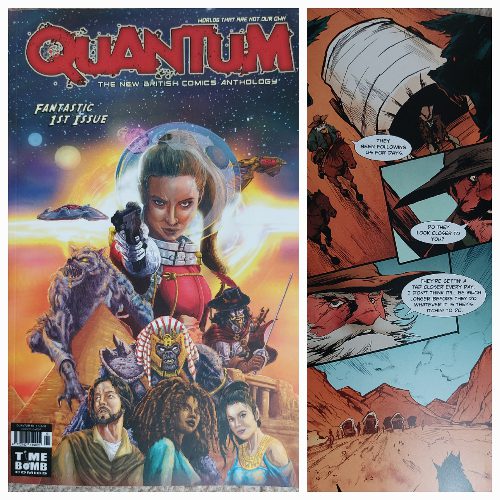
Comic Number 119: Quantum #1
The final entry for this week is a bit different. It is a new anthology comic from British publishers Time Bomb Comics. The aim of the comic is to recapture some of the newsagent sales that were the backbone of British comics for decades. When I was young, all of my comics came from newsagents and I didn’t go to a specialist comic shop until I was a teenager — however the range of comics that I could buy and read was immense. Children’s titles such as The Beano sat on the shelf with The Transformers, The Punisher, Aliens, and, of course, 2000AD. There were even a selection of adult humor comics such as Viz and Electric Soup that were available on the shelf every month without having to travel to a city or a specialist shop.
I’m not sure at what point the newsagent sales died out but it was definitely in the last 25 years. I worked for WH Smiths (one of the biggest stationary and magazine shops in the country), and in my time there I saw a decline in the comic titles that we stocked. Randomly, I saw the number of boating magazines increase. I don’t think the two were related.
The point is, these days buying comics is no longer a simple, impulsive thing to do, especially if you are younger. You have to go out of your way to find and buy comics. Time Bomb Comics are wanting to change that, just a little bit, with this new title Quantum. It is a kind of rival title to 2000AD but with a more historical edge, rather than straight sci-fi. Quantum features alternative realities of the British Empire, Supernatural Westerns, and modern day Superhero-esq stories. All are fascinating as first parts, but “WesterNoir” by Dave West and Gary Crutchley and “Whatever Happened to the World’s Fastest Man?” by West (again) and Marleen Starksfield Lowe are the standout comics for me. I have already built up a love for “WesterNoir” as for a number of years I’ve been buying the comics from the Thought Bubble convention whenever I’ve been there, but the latter comic also has an interesting premise and well structured gray scale artwork.
I’m not sure if this comic has the strength to reignite the newsagent market for comics, but it has got off to a good start and I will be checking out issue two.

